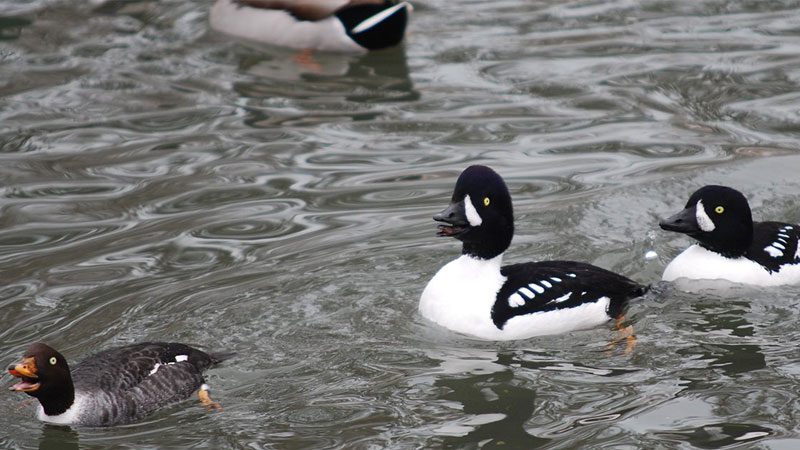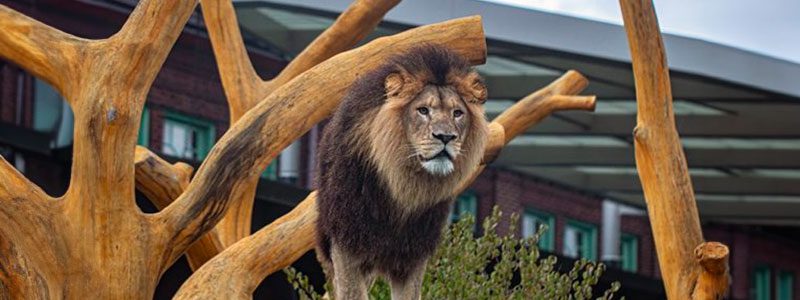
Barrow’s Goldeneye
Hope B. McCormick Swan Pond
Did You Know?
- Males court females using elaborate displays that include twisting and pumping their heads.
- Females may create or reuse nests in large tree cavities. They also use rock crevices, abandoned buildings, or the ground beneath bushes as nesting sites.
- Barrow’s goldeneye ducklings are very independent. They leave the nest just a day or two after hatching to follow their mother to the water. They also feed on their own and fly after about eight weeks.
Don’t See the Animals?
Why aren’t animals visible at all times? To promote positive animal welfare, we provide animals with choices. They can choose to spend time in areas that are out of public view.

Take an Animal Home with You
Overview
Scientific Name: Bucephala islandica
Class: Birds
Diet: Insects, larvae, crustaceans, mollusks, and plant matter
Range: North America and Iceland
Endangered Status: Least Concern
More Information
Barrow’s goldeneyes were named for their bright yellow eyes, which contrast against their dark face. They are medium-sized ducks, about 18 inches long and weighing around 3 pounds. When breeding, males have an iridescent purple head, white undersides, and a black back and wings. They also have crescent-shaped white patches behind their bill and additional white spots along their wings. Females have a brown or olive head, yellow-orange bill, and gray body plumage.
They are often found in pairs or small flocks. They dive underwater to capture prey. Females select nesting sites and lay five to 14 eggs that are incubated for around one month. The offspring of several females may come together to be cared for by a single female. These ducks have increased in population over the past few decades, but threats include hunting, habitat loss, and pollution.
